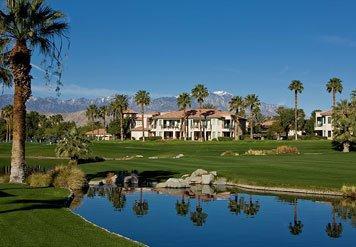When purchasing a vacation ownership with biennial usage rights, understanding maintenance fees is a vital part of budgeting, planning, and protecting yourself throughout your transaction. Biennial ownerships, which allow you to use your timeshare every other year, come with unique fee structures that vary depending on the payment schedule and the timeshare brand.
In this article, we’ll explain how maintenance fees work for biennial use properties, what you are paying for, and key considerations for buyers and sellers of Marriott Vacation Club timeshares, as well as some of the top timeshare brands.
What Are Biennial Use Ownerships?
Odd-Year and Even-Year Usage
Biennial ownership means you have the usage rights to reserve your timeshare every other year. This can be set up for either odd or even-numbered years. For example, an odd-year ownership provides you access during years like 2025, 2027, and 2029. Conversely, even-year ownership allows usage during years like 2026, 2028, and 2030.
Why Owners Choose Biennial Ownerships
This arrangement is especially useful for those who may not need to vacation every year but still wish to enjoy the benefits of timeshare ownership. Another popular strategy is to purchase a biennial ownership at one resort, then purchase another biennial ownership with the opposing years at another resort. This would allow the owner to switch between their two favorite resorts each year without needing to exchange their weeks.
How Are Maintenance Fees Structured for Biennial Ownerships?
Payment Structures
Maintenance fees for biennial ownerships are billed differently compared to properties with annual usage rights. Generally, there are two main billing methods for biennial owners are as follows:
Payment During Use Years Only
Owners are charged maintenance fees only in the years they have access to their timeshare. For example, an odd-year owner would pay fees in years like 2025 and 2027 and would skip payments in non-use years such as 2026 and 2028.
Half-Payment Every Year
Some timeshare brands divide the annual maintenance fees in half, requiring payment every year regardless of whether the owner is using their timeshare. For instance, a biennial owner of Marriott’s Waiohai Beach Club might pay approximately half the fee of an annual owner each year, effectively spreading the cost over non-use years.
Billing Practices of Major Timeshare Brands
The way maintenance fees are billed varies across well-known timeshare companies. Here’s a summary of how some of the leading brands handle biennial ownership fees:
| Timeshare Brand | Payment Schedule |
|---|---|
| Marriott Vacation Club | Every year – ½ fee |
| Hilton Grand Vacations | During use years only |
| Vistana Signature Experiences (Sheraton and Westin) | Every year – ½ fee |
| Hyatt Residence Club | During use years only |
| Disney Vacation Club | N/A – Biennial ownerships not available |
| Club Wyndham | Every year – ½ fee |
| Breckenridge Grand Vacations | Every year – ½ fee |
Understanding how your specific timeshare brand handles maintenance fees can help you manage your travel budget, and have a predictable payment schedule.
Key Considerations for Buyers and Sellers
For buyers, it is critical to carefully evaluate the total cost of ownership before committing to a biennial timeshare. Although biennial maintenance fees may appear lower since they are spread over two years, it’s essential to recognize the full fee amount when calculating your cost per usage. For example, the total fee for two years of ownership is equally charged during the years leading up to your stay.
For sellers and buyers, determining responsibility for maintenance fees during a timeshare transfer is essential. Generally, for properties billed during use years, the buyer begins paying maintenance fees in the first applicable use year. However, for biennial properties with fees billed every year, timing can become more complex. Ensuring clarity in purchase agreements about who pays which fees will help avoid misunderstandings.
Marriott Vacation Club allocates maintenance fees for biennial ownerships across the use year and the following year. For instance, if an owner has an odd-year usage property, the fees paid in both 2025 and 2026 would contribute to the cost of the 2025 usage.
This observation is based on many years of brokering timeshare transactions and reviewing closing documents. It’s important to note that Marriott’s policies or regulations may influence this practice. If you are selling a biennial ownership and Marriott enforces their right of first refusal, it’s crucial to explicitly outline in the purchase agreement which party, seller or buyer, is responsible for fees in each calendar year.
Without this clarity, sellers may face deductions from their proceeds to cover fees for the year following the use year, particularly if they’ve already utilized their stay for that period. Properly addressing this in the agreement can help prevent unexpected fees.
Final Thoughts
We hope this article has helped demystify the billing of maintenance fees for biennial ownerships. Ownerships with every-other-year usage rights provide a flexible option for vacationers, and with the right planning, owning a biennial timeshare can be a great strategy for certain travelers. Biennial ownerships can also offer an incredible value, allowing buyers to own at some of the most sought-after resorts for a much lower initial price.
Don’t let a lack of knowledge disempower you from finding the perfect ownership for your needs!
Learn More About Marriott Vacation Club
If you’re interested in learning more about Marriott Vacation Club biennial ownerships, you can read our in-depth article here: Marriott Vacation Club Biennial Weeks: How Every-Other-Year Usage Works.
If you’d like to learn more about Marriott Vacation Club in general, feel free to browse our back catalog of Marriott articles that cover a wide range of educational topics like advanced usage guides, the latest Marriott news, and expert buying or selling tips.
If you would like to learn more about the process of selling your Marriott timeshare or buying a Marriott resale, please contact us today. Our licensed agents are standing by to answer any questions you have, and offer guidance based on their many years of specializing in Marriott resales.





